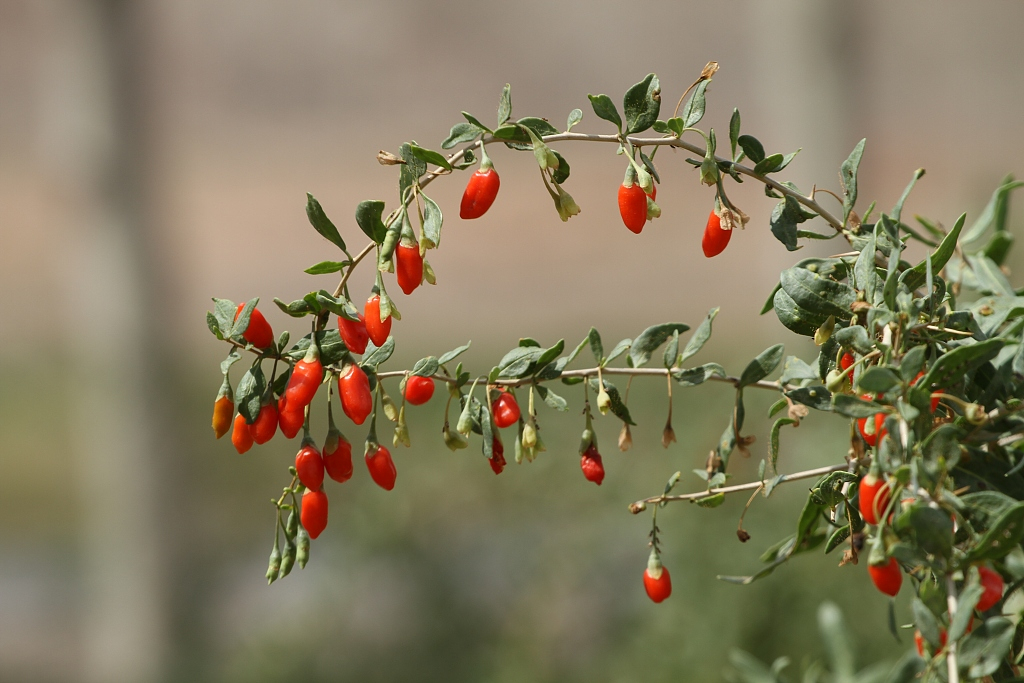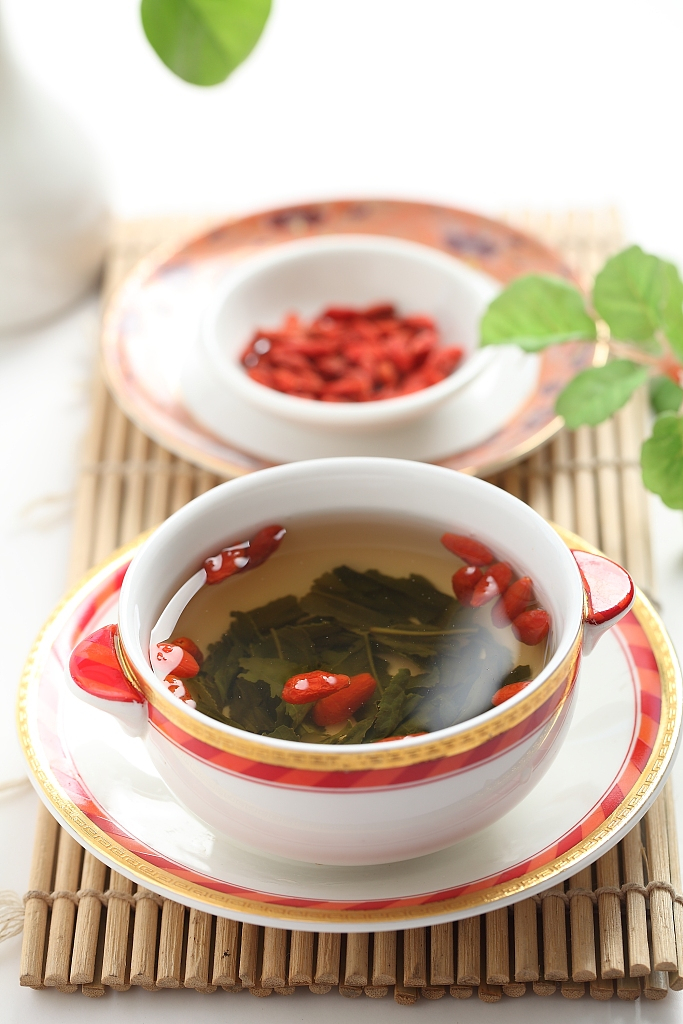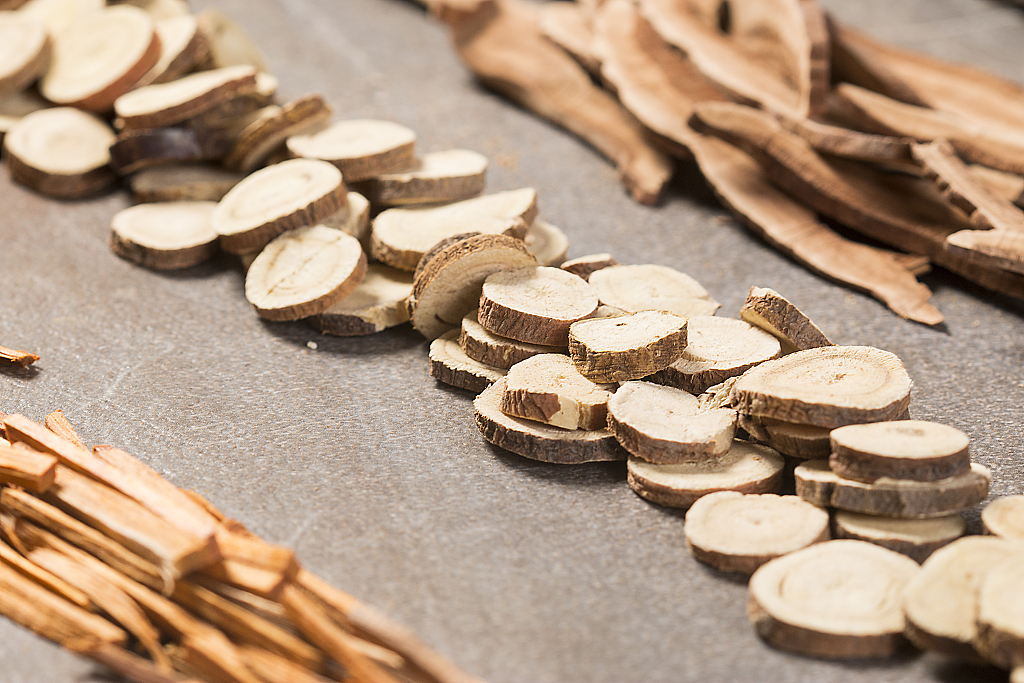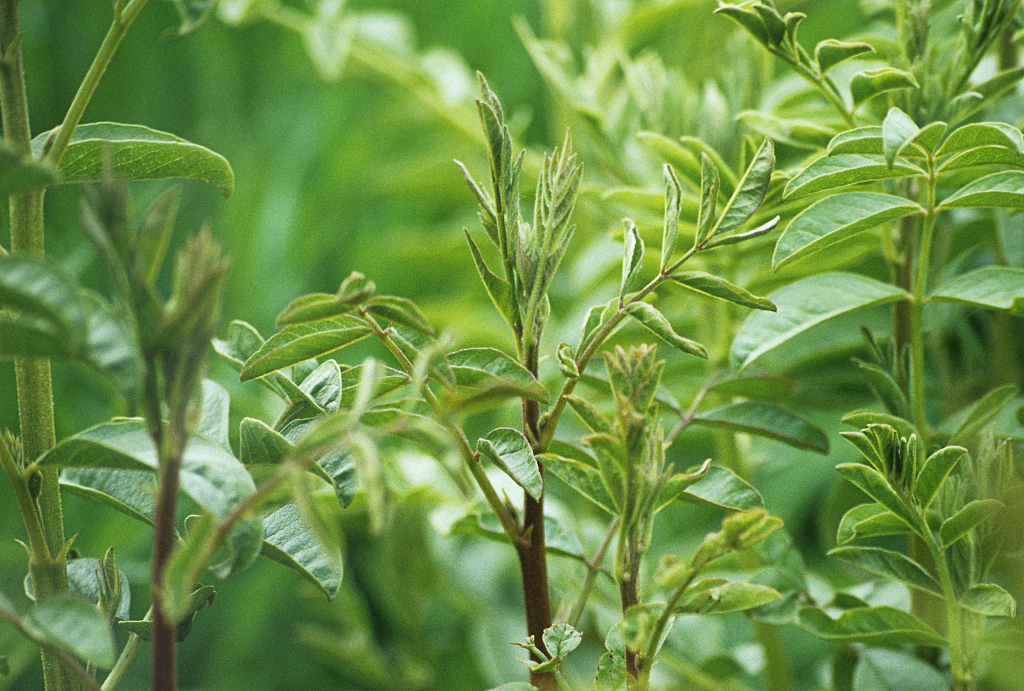
Chinese wolfberries are the perfect example of a produce that outshines its birthplace.
The small red berry is known as a superfood, an ingredient in Chinese cuisine and an indispensable element in Traditional Chinese Medicine (TCM). Despite their culinary fame, these raisin lookalikes come from a humble background in northwest China's Ningxia Hui Autonomous Region.
Along with Chinese licorice, Tan sheepskin, facai (an edible hair-like moss) and Helan stones, the Chinese wolfberry is one of Ningxia's five treasures.

Chinese wolfberries. /VCG Photo
Mostly surrounded by desert, Ningxia does not enjoy mild climate and fertile lands. However, it's exactly the lack of these elements that provides agreeable conditions for the wolfberry to grow. The large temperature difference between day and night, abundant sunlight and soil with relatively high pH are fatal to most plants but tick all the right boxes for the berries to grow.

Chinese wolfberries. /VCG Photo
Now, the wolfberry has become the ambassador of Ningxia, finding a foothold in many countries around the world and becoming a ubiquitous food ingredient with a great medical value.

Tea infused with Chinese wolfberry. /VCG Photo
Chinese licorice
Chinese licorice is an important TCM ingredient, given that one of its notable effects is to cure coughing. It is also part of recipes to make candies and gums.

Processed Chinese licorice is a Traditional Chinese Medicine ingredient. /VCG Photo
Just like the Chinese wolfberry, it enjoys dry weather. Therefore, Ningxia has become famous within the TCM community for growing the finest licorice.

Chinese licorice. /VCG Photo
Medical value aside, the plant helps improve the soil quality. Because the roots stretch four or five meters deep underground, large-scale collection severely impacts the already dry and infertile land in Ningxia. With environmental protection in mind, the local government has banned harvesting wild licorice, encouraging instead its artificial cultivation at facilities.
China's Flora Tour
From the wetlands along the coast to the dense rain forests hidden in the southwest of China, all boast an array of plant species. In this series, we will go on a tour to learn about some of the most representative flora in different provinces and see how they live in harmony with the local geography and climate.
(If you want to contribute and have specific expertise, please contact us at nature@cgtn.com.)

Copyright © 2018 CGTN. Beijing ICP prepared NO.16065310-3
Copyright © 2018 CGTN. Beijing ICP prepared NO.16065310-3